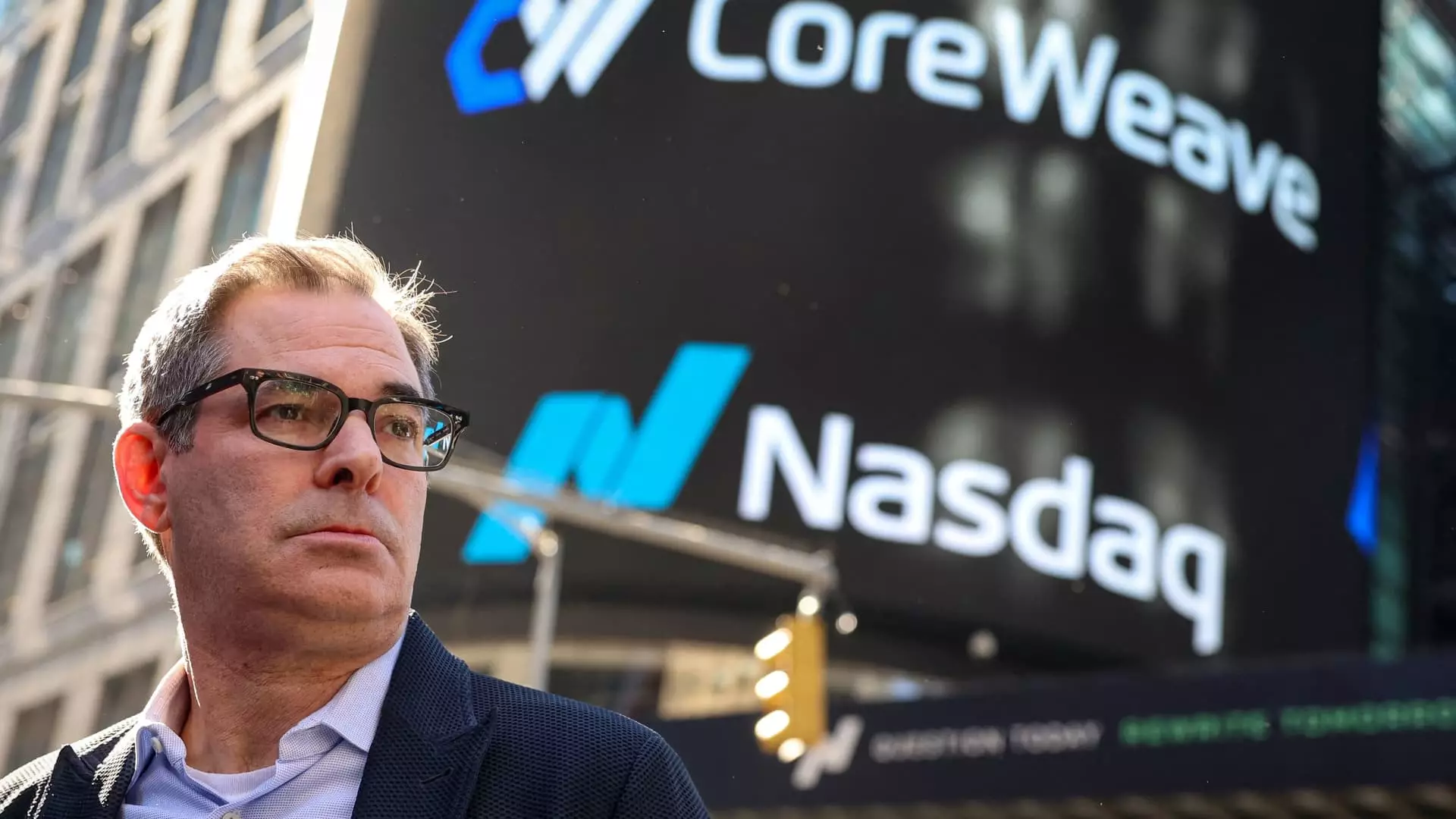CoreWeave, a New Jersey-based company specializing in artificial intelligence (AI) server rentals, has recently found itself at the center of the tech industry’s spotlight. After going public in March 2023, the company shared its first earnings report this Thursday, showcasing impressive revenues but raising eyebrows simultaneously regarding its financial strategies, growth sustainability, and the looming burden of debt. CEO Michael Intrator paints an ambitious picture, emphasizing the need to ramp up capital expenditures dramatically—projected to reach an astonishing $20 billion to $23 billion in the current year. This figure is more than four times greater than analysts’ estimates and signals the company’s commitment to broaden its infrastructure quickly in response to rising client demands. However, the implications of this bold strategy raise important questions about its viability and sustainability.
The Debt Dilemma
CoreWeave’s aggressive spending is not without consequence. As The Wall Street Journal has reported, investors and analysts alike are voicing concerns over the company’s burgeoning debt levels and the overall sustainability of its customer demand. While Intrator insists that the company’s financing remains robust and that CoreWeave can meet its obligations promptly, skeptics contend that the path to profitability appears increasingly perilous. Analysts like Gil Luria of DA Davidson have downgraded CoreWeave’s stock from neutral to underperform, citing serious red flags around its interest payments that do not align with its returns on assets. In essence, for every dollar the company borrows at a rate of 12.5%, it’s only expected to generate a 5% return. Such troubling figures call into question whether the company can justify its capital-heavy expansion model.
Promising but Perilous Revenues
Despite expressions of concern, CoreWeave’s revenue figures are undeniably compelling. The company reported an astonishing 420% growth in revenues, hitting $981.6 million during the quarter, defying earlier estimates. Moreover, its predictions for future growth are similarly bullish, projecting nearly $5 billion in revenues this year. But while this rapid growth may seem undeniably positive, it sits on shaky foundations, as indicated by the company’s widening net loss, which ballooned to $314.6 million. The majority of this loss stems from substantial stock-based compensation costs associated with its initial public offering (IPO), raising questions about the long-term impact on shareholder value.
Client Dependence and Market Risks
One of the more concerning aspects of CoreWeave’s business model is its heavy reliance on tech giants like Microsoft, Nvidia, and OpenAI. While these partnerships have so far buoyed the company’s fortunes, they also create a sense of vulnerability. The tech landscape is penetratingly volatile, and a sudden shift in demand could leave CoreWeave scrambling to maintain its revenue streams. The commitment from OpenAI in March to a five-year, nearly $12 billion deal is a substantial feather in CoreWeave’s cap—but if that demand should falter or, worse, if a competing provider emerges, the consequences could be dire.
Moreover, as the market dynamics shift through technological advancements and the arrival of new competitors, CoreWeave’s extensive investments could become liabilities rather than assets. With a staggering revenue backlog of $25.9 billion, which reflects future work already contracted, there’s no guarantee that clients will still find CoreWeave’s services preferable two, three, or five years down the line.
A Tentative Future
As the company presents a bold front with its financial maneuvers, the reality is that CoreWeave stands at a crossroads. The juxtaposition of its rapid revenue growth and alarming debt levels creates a precarious balance. Intrator appears committed to doubling down on infrastructure expansion in response to burgeoning AI demands, but detractors point to a potential trap of “short-term gains versus long-term sustainability.”
In a market characterized by extreme fluctuations and unprecedented competition, the challenges for CoreWeave become magnified. Its optimistic outlook may capture the imagination, but that optimism also masks serious questions about the fundamentals of its financial health. As this tech player forges its path forward, it must reckon with the fact that scaling operations is fraught with risks—risks that could prove devastating if not navigated with extreme caution.

